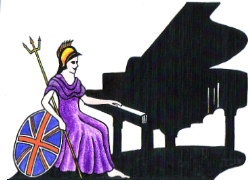Teachers, Accompanists and Piano Entertainers in the UK

UK Piano Page

152 Market Street
Dalton-in-Furness, Cumbria LA15 8RQ
England
Feilden St
Blackburn, Lancashire BB2 1LN
England
Reidys home of Music was established in 1922 and
40 Willsgrove
Cahercalla
Ennis, County Clare
Republic of Ireland
Pianos for Sale
Tree Tops
3 Teviot Bank Gardens
Hawick, Renfrewshire TD9 8PB
Scotland
We can retail most of the well known brands of
156 Hatfield Road
St Albans, Hertfordshire AL1 4TU
England
Selection of new and restored pianos always in
Music Festival for performers and guests Our 10th
18-06-2022 01:30PM
The Morecambe Bay Piano Group was set up to extend
11-12-2021 02:00PM
The Morecambe Bay Piano Group was set up to extend
08-01-2022 02:00PM
The Morecambe Bay Piano Group was set up to extend
12-02-2022 02:00PM